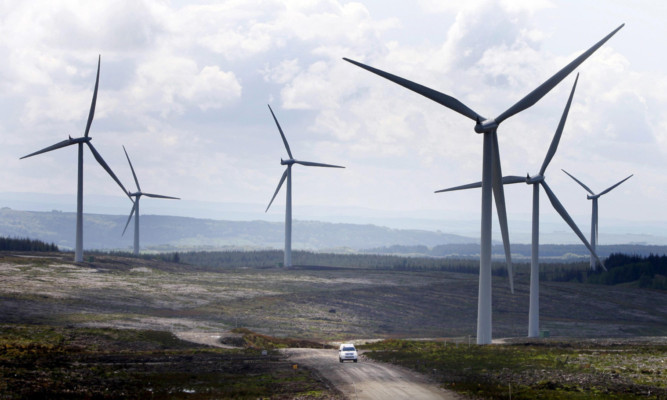Scotland produced enough energy from renewable sources to power every home in the country last year, new figures have shown.
The statistics, released as part of the UK Government’s Department of Energy and Climate Change’s annual Energy Trends report, also reveal how investment in the sector particularly in onshore wind rocketed during 2012.
Scottish Renewables used industry estimates to calculate an overall spend of £1.54 billion on new projects over the course of the year, with £1.36bn of that total used to install new onshore turbines.
The total is double the sum spent on renewables during 2011, and will add just over 1GW of generating capacity as it brings the nation’s total to 5.88GW. The total amount of power generated in Scotland last year rose 7% to more than 14,600 GWh.
Scottish Renewables senior policy manager Joss Blamire said the figures prove renewable energy is now a “major part of our energy mix” and a considerable economic driver. If the growth in the sector is maintained, green power could overtake nuclear as the country’s dominant power source by the end of the year.
“It’s been another record-breaking year for the renewable energy industry in Scotland with more of our electricity being produced by renewable energy sources than ever before, and we’ve doubled the investment being driven into the Scottish economy in just one year,” Mr Blamire said.
“We are on track to be Scotland’s main source of electricity by the end of this year.”
Across the UK as a whole, total renewable generation climbed 19.5% to more than 41,000GWh. Investment using the same set of sector estimates adopted by Scottish Renewables came to £7.4bn, as capacity increased by 3.17GW.
More than a quarter of that boost was down to the rise in Scottish onshore wind, but a larger proportion came from offshore wind investment in the Irish and Southern North Seas. Solar energy also made a significant contribution, as did biomass.
Scottish Energy Minister Fergus Ewing said the figures show Scotland is on course to meet its renewable electricity generation targets of 50% by 2015 and 100% by 2020.
The total currently stands at 39%.
He said: “Scotland also contributed more than a third of the entire UK’s renewables output, demonstrating just how important a role our renewable resource is playing in terms of helping the UK meet its binding EU renewable energy targets.
“We remain firmly on course to generate the equivalent of 100% of Scotland’s electricity needs from renewables by 2020 with renewables generating more than enough electricity to supply every Scottish home.”
